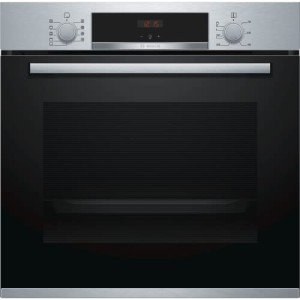How To Create An Awesome Instagram Video About Builtin Oven
페이지 정보
작성자 Rebecca 댓글 0건 조회 40회 작성일 25-05-20 05:02본문
The Comprehensive Guide to Built-In Ovens: Features, Benefits, and FAQs
Built-in ovens are a popular choice for modern cooking areas, using adaptability, convection built in ovens effectiveness, and a sleek style that incorporates seamlessly into kitchen cabinetry. This short article will explore the various elements of built-in ovens, including their features, advantages, installation options, upkeep pointers, and responses to commonly asked questions.
What is a Built-In Oven?
A built-in oven is developed to be installed within kitchen cabinetry and is available in different setups, such as single or double ovens. Unlike freestanding ovens, built-in designs supply a streamlined look and offer more versatility in kitchen style. They come in electric integrated oven, gas, and steam alternatives, catering to a series of cooking preferences.
Functions of Built-In Ovens
Built-in ovens are packed with functions that boost cooking experiences. Here are a few of the most typical features to think about:
| Feature | Description |
|---|---|
| Self-Cleaning | Many models consist of a self-cleaning function that burns residue at heats, streamlining upkeep. |
| Convection Cooking | This feature utilizes a fan to distribute hot air, cooking food more uniformly and rapidly. |
| Smart Technology | Some ovens come equipped with Wi-Fi connection, allowing users to control the oven from another location through smartphone. |
| Multiple Cooking Modes | Consist of choices such as baking, broiling, roasting, and air frying, providing versatility for different dishes. |
| Temperature Probe | Keeps track of the internal temperature level of food, making sure completely cooked meals whenever. |
| Sleek Design Options | Available in different finishes (stainless-steel, black, white) to match kitchen design. |
Advantages of Built-In Ovens
The setup of a built-in oven brings many benefits to any kitchen:
- Space Efficiency: Built-in ovens make the most of kitchen space, providing a tidy and organized appearance without sacrificing functionality.
- Boosted Cooking Performance: With advanced features like Convection Built In Ovens cooking and precise temperature controls, built-in integrated ovens for sale frequently surpass traditional models.
- Style Flexibility: These ovens can be installed at eye level, enabling simple gain access to without flexing down, which can be specifically helpful for individuals with physical restrictions.
- Enhanced Resale Value: A well-designed kitchen with high-quality built-in appliances might attract potential buyers, boosting general home value.
- Customization Options: Many brand names use customizable styles that fit the particular measurements and visual of specific cooking areas.
Setup Options
When choosing a built-in oven, comprehending the installation options is important. Here are the most typical configurations:
Single Built-In Oven: Ideal for smaller cooking areas, these units offer adequate area to cook a variety of meals simultaneously, perfect for daily cooking.
Double Built-In Oven: Best fit for avid cooks and large households, double ovens permit for simultaneous cooking at two different temperature levels, suitable for meals that need varied cooking approaches.
Combination Steam and Oven: A hybrid option that integrates the benefits of traditional baking with steam cooking. This option is excellent for retaining moisture in foods, making it best for baking bread or roasting meats.
Maintenance Tips for Built-In Ovens
Preserving a built-in oven is essential for its longevity and ideal performance. Here are some practical maintenance tips:
Regular Cleaning: Use the self-cleaning function when essential, and wipe down the exterior and interior surface areas frequently to avoid grease buildup.
Check the Seals: Inspect the oven door seals for any wear or damage to ensure correct insulation and cooking effectiveness.
Temperature Calibration: Occasionally check the temperature accuracy using an oven thermometer, particularly if cooking times appear longer than normal.
Ventilation: Ensure sufficient ventilation around the oven to prevent getting too hot, particularly for built-in designs that might be surrounded by cabinetry.
Frequently Asked Questions About Built-In Ovens
1. Are built-in ovens more costly than freestanding designs?Yes, built-in ovens tend to be more expensive due to their design, setup requirements, and additional features. Nevertheless, their benefits can justify the cost in the long run.
2. Can you set up a built-in oven yourself?While some helpful people may attempt to set up a built-in oven, it is recommended to employ an expert to ensure correct installation, ventilation, and safety standards.
3. What is the typical life-span of a built-in oven?The normal lifespan of a built-in oven is around 10 to 15 years, depending on use and upkeep. Regular care can help extend its longevity.
4. Are built-in ovens energy efficient?Numerous modern-day built-in ovens are developed with energy effectiveness in mind, incorporating functions like insulation and precise temperature controls that might minimize energy usage compared to older designs.

5. Can a built-in oven be fixed if it breaks?Yes, built-in ovens can often be fixed. It is suggested to get in touch with a qualified technician for medical diagnoses and repairs to guarantee safety and compliance with guarantee contracts.
Built-in ovens are an outstanding addition to any contemporary kitchen built in oven, offering a combination of style, functionality, and advanced cooking functions. With the right knowledge about their functions, benefits, and maintenance, property owners can make educated choices to improve their cooking experiences. As kitchen style trends continue to evolve, the built-in oven remains a staple for those aiming to blend aesthetics with efficiency in their cooking areas.
댓글목록
등록된 댓글이 없습니다.


